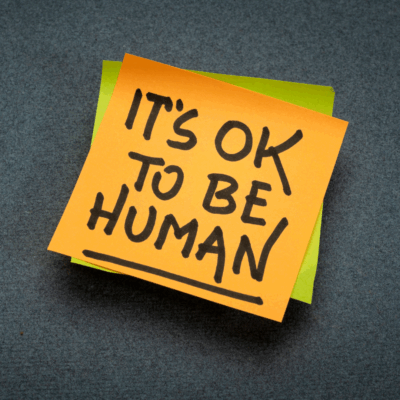How HR Pros Can Maintain a Culture of Psychological Safety
Psychological safety, the belief that one can speak up, share ideas, and express concerns without fear of retribution or negative consequences, is crucial in creating a productive and healthy work environment.
However, recent research conducted by Amy Edmondson, the Novartis Professor of Leadership and Management at Harvard Business School, highlights a concerning trend: new hires often experience a significant drop in psychological safety after their first year on the job.
This decline can have far-reaching consequences for employee engagement, retention, innovation, and overall organizational health.
Understanding the factors contributing to this erosion of psychological safety and exploring strategies that HR professionals can use to foster a continuously safe environment for employees from day one and beyond is essential for modern organizations.
Why Psychological Safety Erodes After the First Year
New hires generally feel psychologically safe during their initial months in a new organization. This initial period is marked by a honeymoon phase, where employees feel encouraged to ask questions, make mistakes, and learn. However, a noticeable decline in psychological safety tends to occur as time passes, particularly after the first year.
Several factors contribute to this erosion:
- The Shift from Learning to Performance Pressure: During the onboarding process and the first year, organizations often emphasize learning and development, allowing employees to make mistakes and ask questions. However, after this period, the focus shifts to performance, expectations become more explicit, and the margin for error narrows. Employees may feel they must prove themselves, leading to increased anxiety about speaking up or sharing unconventional ideas.
- Normalizing of Workplace Hierarchies: Initially, new hires are often given direct access to senior leaders and encouraged to engage in open dialogue. Over time, however, hierarchical norms become more ingrained. The initial openness can be replaced with more rigid structures, making employees hesitant to express concerns or ideas that could be perceived as challenging authority.
- Fear of Negative Consequences: Employees become more cautious as they settle into their roles and start thinking about long-term career prospects within the organization. They may worry that speaking up about a problem or questioning a decision could result in being labeled as a troublemaker or negatively impact their career progression. This fear gradually undermines psychological safety.
- Loss of Fresh Perspective: New hires bring fresh eyes and perspectives to their roles, often questioning existing processes and suggesting improvements. Over time, however, as they become more familiar with the organizational culture and norms, they may unconsciously adopt the status quo, reducing their willingness to challenge established ways of doing things.
- The Reality of Office Politics: Office dynamics and politics become more evident after the first year. Employees begin to understand the organization’s “unwritten rules” and who holds the real power. Navigating these politics often results in a cautious approach to speaking up, as individuals may fear damaging key relationships or jeopardizing their standing in the company.
What HR Professionals Can Do to Maintain Psychological Safety
To prevent this decline in psychological safety, HR professionals must proactively implement strategies that sustain a psychologically safe environment throughout an employee’s journey—from their first day to many years.
Here are some key strategies:
Reinforce a Culture of Continuous Learning
Organizations must focus on learning and growth, not just during onboarding but as a permanent aspect of the work culture.
This can be achieved by:
- Create avenues for ongoing training, workshops, and learning sessions that emphasize curiosity and exploration. Leaders should model this behavior by continuously learning and openly admitting when they do not know something.
- Promote a growth mindset throughout the organization by celebrating efforts and learnings rather than just outcomes. Recognize and reward employees for taking risks, asking questions, and sharing new ideas—even if those ideas do not always result in success.
Normalize Vulnerability at All Levels
For psychological safety to thrive, leaders must model vulnerability and openness. This means being transparent about their own mistakes and uncertainties. According to Edmondson’s research, when leaders are open about their fallibility, it encourages employees to take interpersonal risks.
HR can facilitate this by:
- Providing leadership development programs focused on emotional intelligence, active listening, and creating safe environments for their teams.
- Managers should conduct regular one-on-one check-ins with their team members to create space for honest conversations. Open forums or town halls where employees can ask questions anonymously can also be effective.
Provide Safe Channels for Feedback and Concerns
To maintain psychological safety, HR professionals must ensure that employees have access to various channels to voice their opinions, concerns, and feedback without fear of reprisal.
- Establish systems like anonymous surveys or digital suggestion boxes that allow employees to share their thoughts without attaching their names.
- Regular surveys should be conducted to gauge the psychological safety levels across different teams and departments. This data can be used to identify problem areas and take corrective actions.
Create a Continuous Onboarding Experience
The concept of onboarding should extend beyond the first few weeks or months. Effective onboarding can last up to a year and beyond, incorporating opportunities for new hires to connect with different teams, receive ongoing training, and receive continuous support.
- Develop a series of structured checkpoints at the six-, 12-, 18-, and 24-month marks. These checkpoints should assess the employee’s comfort in their role, relationship with their team and manager, and overall psychological safety.
- Encourage employees to work on cross-functional projects or temporary assignments with different departments. This exposure broadens their perspective and helps them feel more connected and integrated within the organization.
Address Office Politics Transparently
Organizations must acknowledge that office politics exist and create an environment where politics do not dictate decisions. Psychological safety requires fairness and transparency in decision-making.
- Create clear policies around promotions, raises, and other career advancement opportunities to ensure they are based on merit rather than favoritism or office politics.
- Equip employees and leaders with the skills needed to handle conflicts effectively and constructively, which can help reduce the negative effect of office politics on psychological safety.
Involve Employees in Decision-Making Processes
Involving employees in decision-making can significantly boost their sense of ownership and psychological safety. People are more likely to feel safe when they believe their voices matter and can make change.
- Use inclusive practices such as participatory decision-making, focus groups, or brainstorming sessions, in which employees from different levels are invited to contribute.
- After collecting feedback, always close the loop by sharing the decisions based on the input received and explaining the rationale behind those decisions.
Monitor and Adjust Psychological Safety Continuously
Psychological safety is not a one-time effort but a continuous process. HR professionals need to monitor the climate and make adjustments as needed regularly.
- Psychological safety is a key metric in employee engagement surveys and performance reviews. Review these metrics regularly and take proactive steps to address any downward trends.
- Treat psychological safety as a living, evolving concept. Regularly review policies, practices, and behaviors that impact psychological safety and adjust them to suit the organization’s changing needs.
The Role of HR In Sustaining Psychological Safety
Psychological safety fosters a culture of innovation, collaboration, and employee engagement. However, as Edmondson highlights, psychological safety is fragile and can erode over time, particularly after the initial onboarding period. HR professionals play a critical role in ensuring that psychological safety is maintained at the start and throughout an employee’s entire journey within the organization.
By focusing on continuous learning, transparent communication, inclusive decision-making, and ongoing support, HR can help cultivate an environment where employees feel safe to speak up, share ideas, and express concerns—no matter how long they have been with the company. Psychological safety is an ongoing commitment, and organizations prioritizing it will see the long-term benefits of a more engaged, innovative, and resilient workforce.







